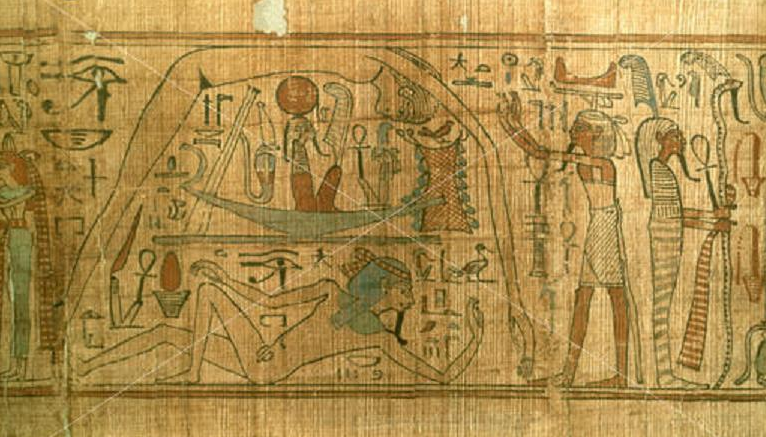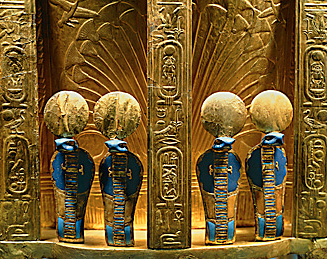“An unimaginably advanced and well-educated society, the ancient Egyptians had been the brains in the back of inventions and discoveries which have prevailed into modern times”.
The Ancient Egyptian’s fascination with science and new technology resulted in inventions – such as the calendar and door lock – that are still used nowadays. In a few cases, their improvements combined shape and function in quite beautiful methods.
Of a tradition aware of its very own procedures and history, student Ian Shaw has commented that “The Egyptian feel of history is one in which rituals and actual events are inseparable-the vocabulary of Egyptian artwork and text very frequently makes no actual distinction among the actual and the idea.”
The inventions and discoveries listed here imply the modest and the more expansive methods in which the ancient Egyptians pulled together the actual and the idea.
Shape developments in personal hygiene, to projects as globally meaningful as the calendar or systems of astronomy, the historic Egyptians’ creative spirit aided the development of human lifestyle over numerous millennia.
Since the early nineteenth century particularly, this has been a source of fascination. So, possibly this is a society that have to be regarded with gratitude for all that they achieved.
Of course, they did it for their very own instant benefit; however one wonders if, someplace deep down, they had a sense that they were doing it for posterity, too.
Time lords: Ancient Egyptian Calendar
c.3000 BCE
It became ancient Egyptian scholars who decided a year having a period of 365 1 days. They divided this into twelve months. Each month comprised three weeks and each week comprised ten days.
So, not quite the breakdown of units of time that we realize now, however very near. They even added five extra days on the end of the calendar year.
In reality, the historic Egyptians adhered to a solar calendar, and to a lunar calendar which predated the creation of the solar calendar.
The calendar tied in not most effective with pursuits in festivals and religious observance, however also informed and made less complicated so much administrative work and accounting exercise.
Throughout the Roman Empire’s colonization of Egypt, inevitable way of life contact took place and it was Julius Caesar who adjusted the calendar in round 46 BCE to add a leap year day.
It is from the Egyptian solar calendar, amended with some Roman changes, then, that our modern calendar takes its form, having first of all been disseminated across Europe through the reach of the Roman Empire.
Associated with the discovery of a calendar order was the Egyptians’ improvement of a sun clock that operates similarly to a sundial.
The plough
c.4000 BCE
An agricultural powerhouse, ancient Egypt invented a completely early shape of the plough. Archaeological investigations have unearthed proof of the ploughing technology such as one that dates from 1550-1070 BCE that is inside the collection now on the British Museum.
Because Egypt was not a especially forested kingdom, the toolmakers had restricted choice in terms of the goodness of the timber with which they could work with and style from.
Yet, the prototypical plough illustrated the precept properly enough for it become extensively used. Only modestly effective in 4000 BCE, the tool had no sophistication to it.
But, through 2000 BCE, the plough was being connected to oxen. We meet examples of Egyptian ploughs that archaeology has excavated, however it is in ancient Egyptian paintings possibly, on buildings and on artifacts that we get the great experience of the position of the plough throughout the essentially agricultural country. Given how familiar the plough would eventually become.
It appears amazing to think that once upon a time there was a moment while it turned into the latest piece of farming technology available.
Personal hygiene
Because ancient Egyptian bread contained grit, over the years it can do harm to the enamel on human’s teeth.
Inventions have been eventually produced in an attempt to counteract this problem: for a toothbrush, timber twigs had their ends frayed to shape a brush-like surface.
To make their toothpaste, the orthographically involved ancient Egyptians concocted a charming recipe consisting of rock salt, mint, dried iris flower and pepper.
It’s truly the case that an hobby in private cleanliness and proper private presentation, which we rather take for granted nowadays, characterized the ancient Egyptian sensibility. Hair was largely considered unhygienic, so the extra hair you had in your head, the further down the social ladder you were.
Boat building
c.3000 BCE
As a river lifestyle, with the sea in close proximity, the ancient Egyptians superior the technology and artwork of boat constructing that became so essential to the Mediterranean peoples.
Seafaring ship ruins had been excavated at Wadi Gawasis and Ayn Sokhna, and that they exhibit the ability and precision that the Egyptians added to naval industry.
As far back as 3000 BCE, at Abydos, planked wood boats were being made. Considerably, the ancient Egyptians used thick planks in their boat building. The planks were held in region by using mortise-and-tenon fastenings.
Of their subtle approach to boat-craft, archaeologist Cheryl Ward explains, “Egyptian-built craft are recognizably unique from those of different cultures and exhibit consistency in philosophy and element over a 2,500-year span.”
A lot of our knowledge of the position of boats and seafaring in ancient Egypt comes to us through hieroglyphs on tablets.
As in different conditions, it seems not unreasonable to indicate that visitors from further afield, especially from the Mediterranean, could have witnessed the ability with seafaring and river navigation and carried the facts back domestic with them.
Gold mining
c.3100 BCE
Gold mining has long been a globally massive industry and, as in lots of other things, we have the ancient Egyptians to thank for the example of this work.
One of our principal sources for insights into Egyptian mining exercise is discovered inside the writings of Diodorus Siculus, the Greek historian.
The Egyptian terrain was wealthy in a variety of minerals and resources, and gold was one such certainly taking place treasure.
As far back as the fourth millennium BCE, the Egyptian citizens were starting to access gold thru alluvial deposits.
Then, as of around 3100 BCE, engineers advanced efficient and productive mining operations that were placed inside the mountain variety east of Coptos and also inside the south in Nubia.
Regular with so much else in their feel of the immediately and the eternal, the ancient Egyptians related the actual practicalities of the world with their religious system: they considered gold to be the flesh of Ra, the sun god. Due to the fact Ra turned into an undying deity, gold too became a talisman of sorts, embodying eternal life.
Writing
c.3200 BCE
For the citizen of ancient Egypt, their faith was that Thoth, the god of wisdom, had bestowed on them the capacity to write.
‘Hieroglyph’ is a word that comes to us from historical Greece and it means ‘sacred carvings’. Hieroglyphs used over 700 signs and symptoms. There was additionally a complimentary shape of shorthand script generally used for writing on papyrus.
For this ancient lifestyle, writing was clearly a manner to document the history of the royal rulers. Other subjects committed to written memory were spells.
Egypt was a tradition that, to some degree, blended an affinity for magic with an affinity for the world of purpose, evidence and research.
Alongside their spells and incantations, records and decrees, Egyptian writing additionally contributed to the recording of poetry such as the story of Sinhue.
The Rosetta Stone has become a globally diagnosed archaeological treasure that approved students to start investigating the material culture of ancient Egypt that archaeology would uncover.
After numerous thousand years, we ‘unexpectedly’ find ourselves able to recognize what their notations mentioned and defined.
The ancient Egyptians also deployed their writing system as a means of growing a constant bureaucracy; it’s an example we’ve all learn from.












